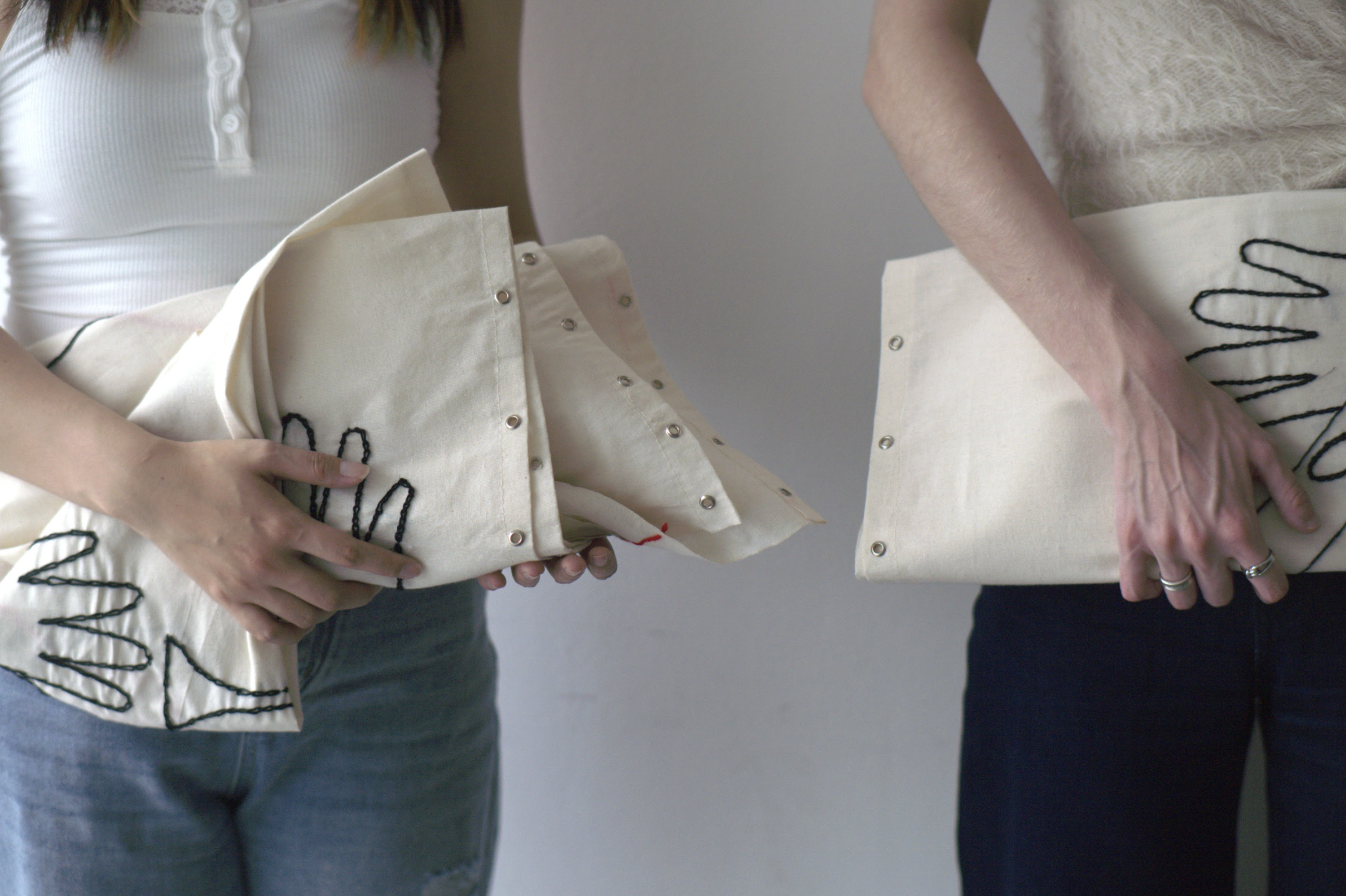The Last Supper
By: Kye Li Chia, Mansi Chottani, Yuying Wang (Abbey), Zuzana Galova, Roshni Suri
Project Details
Magnetic
Design Brief:
Design and make a new form for a dematerialised artefact.
Design Statement:
If the concept of a "first date" exists, why couldn't there be a concept of a "last date"?
Design Outcome:
"The Last Supper" is a breakup toolkit that provides closure through interactive parting rituals. It redefines breakups as a mutual process, honoring the relationship's end and creating new meaning. This toolkit combines text-based reflection with in-person rituals, acknowledging the value of both physical connection and thoughtful communication.
Research Methods:
Artefact Analysis, Decoding-Encoding, Love Letter-Breakup Letter, Mind Map, Directed Storytelling, Social Media Research, Prototyping, Data Visualisation, Body Mapping
My Responsibilites:
I was deeply involved throughout the entire design process for this project, from initial research and prototyping to crafting user-friendly copy and establishing the brand identity. I also helped hand-sewed the final product and filmed/edited the teaser video .
My Responsibilites:
I was deeply involved throughout the entire design process for this project, from initial research and prototyping to crafting user-friendly copy and establishing the brand identity. I also helped hand-sewed the final product and filmed/edited the teaser video .
Research (Phase 1)
Artefact Analysis:
To understand the concept of dematerialisation, we analysed a group of dematerialised objects, including keys, books, and postcards.



Decoding-Encoding:
We explored decoding-encoding exercises to grasp the concept of dematerialisation. We noticed that items transform into different forms rather than fully dematerialise. As a group, we collectively decided to focus on the dematerialisation of conversations, particularly the shift from in-person breakups to breakup texts.



Love Letter, Breakup Letter:
We explored the gains and losses of letters, text messages, and physical conversations. It is revealed that letters, rich in emotions, are valued for their tangible, sensory experience, and the ritual of receiving them. Despite their personal nature, writing and delivering letters entail time, cost, and effort. In contrast, text messages provide convenience, constant accessibility, and easy communication but lack a personal touch, can be distracting, and sometimes appear less genuine.
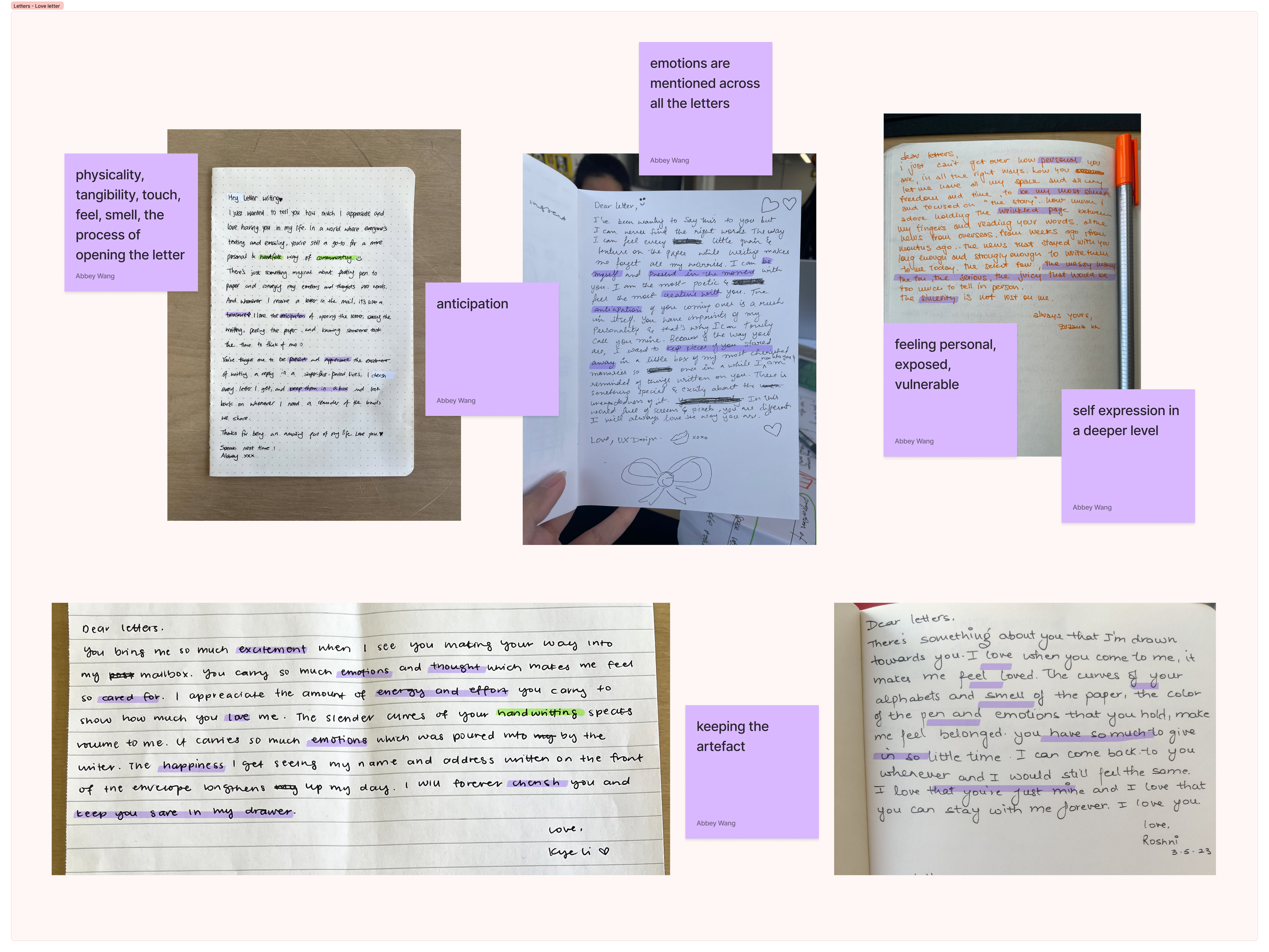





Primary Research (Mind Map):
We initiated a breakup text-focused mind map, recording thoughts and questions on the topic. Subsequently, analysed the mind map to pinpoint the most intriguing points.

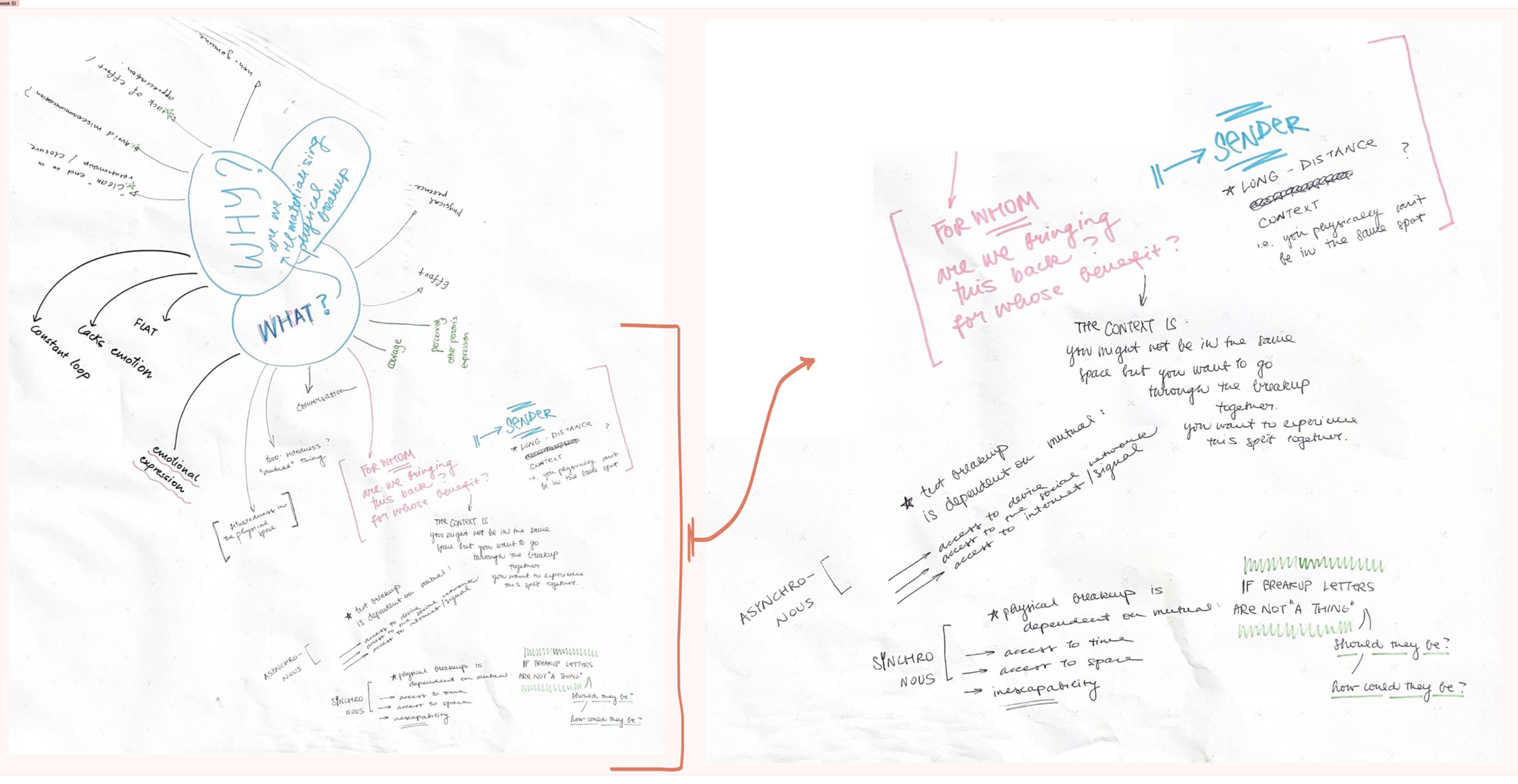
Directed Storytelling:
In the directed storytelling exercise, participants shared their perspectives on breakup texts and alternative relationship-ending methods. Key findings include:
- Breakup texts may not be perceived negatively in cases of abusive or long-distance relationships.
- Compared to breakup letters, texts are often seen as less personal and effortful.
- While texts allow for the organisation of thoughts, they lack the sensory experience of traditional communication.
- The two-dimensional nature of screens and binary code (0s and 1s) in breakup texts contrasts with the tangible aspects of emotions involved in the breakup experience.
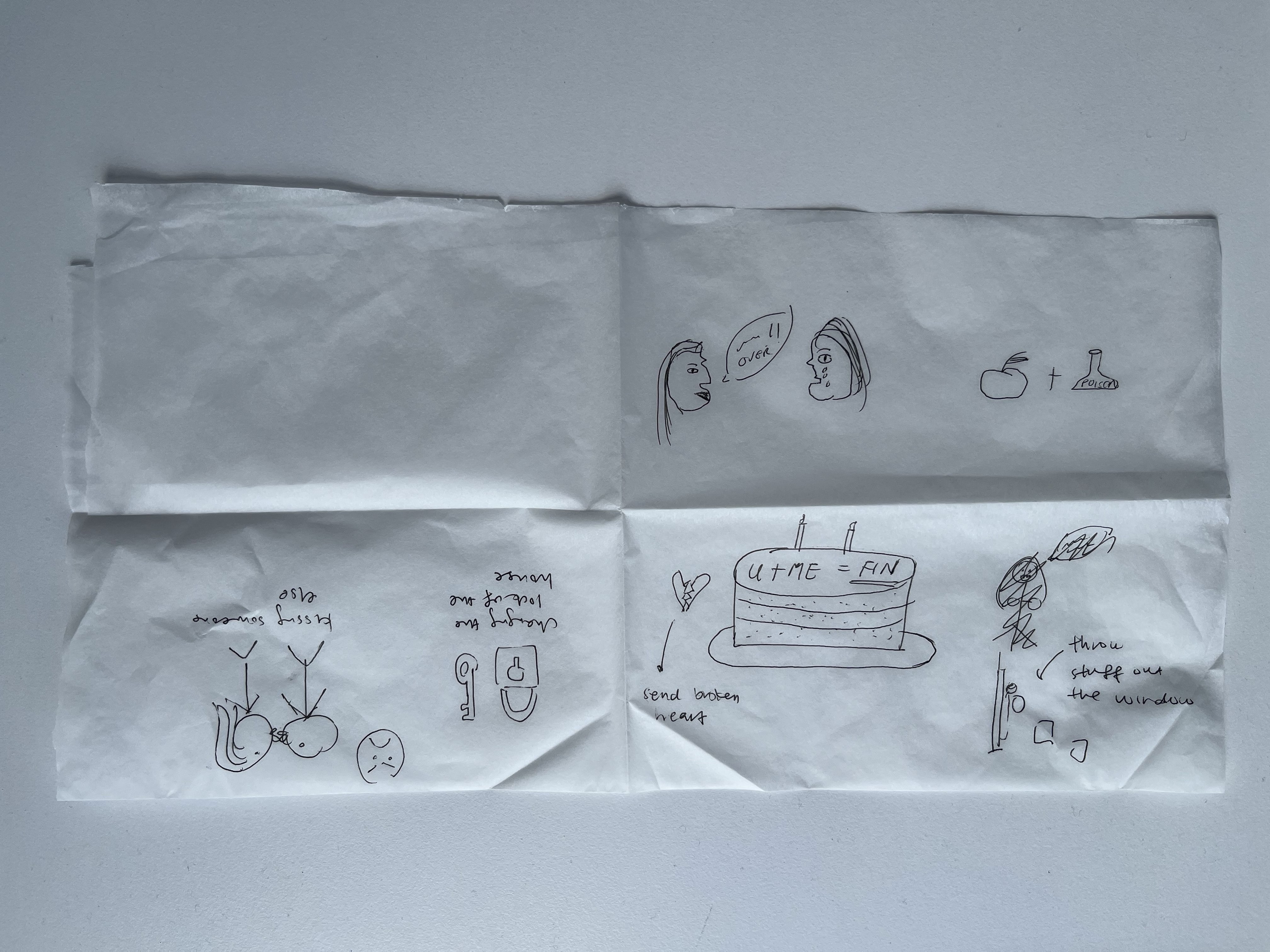

Prototype A


Reflection:
Acknowledging limitations in the concept and uncertainty about its further development, we decided to dedicate the week to generating new ideas for prototyping.
Research (Phase 2)
To gain deeper insights into breakup texts, we tried to collect as many breakup texts as possible. We achieved this by strategically placing QR codes across the university campus, guiding individuals to our Instagram page (@breakup_vault), where they could share their breakup texts with us.
We gathered breakup texts and ideas from diverse platforms like Hinge, Instagram, and WhatsApp. Upon compilation and analysis, recurring phrases and language patterns were identified.

Visualisation of Words:
To explore the different perceptions of these phrases, we attempted to visualise them through drawings. This activity unveiled that text messages often symbolise the transition between "what was" and "what will be" for both parties. Notably, some keywords, such as "hey," "I'm done," "but," and "goodbye," had comparable visual representations, signifying a transition from something to nothing. Besides that, phrases like "things haven't been working out" and "it's not meant to be" conveyed a difference in expectations without assigning blame to either party.

Visualisation and analysis of common breakup phrases.
We conducted a survey around the university to inquire about individuals' emotions when sending or receiving a breakup text. The body mapping exercise revealed that people predominantly experience the impact of a breakup text in their head, chest, stomach, and hands. Reported feelings included a tense pit-of-the-stomach anxiety, tightness in the chest, and a sense of relief.

Prototype B

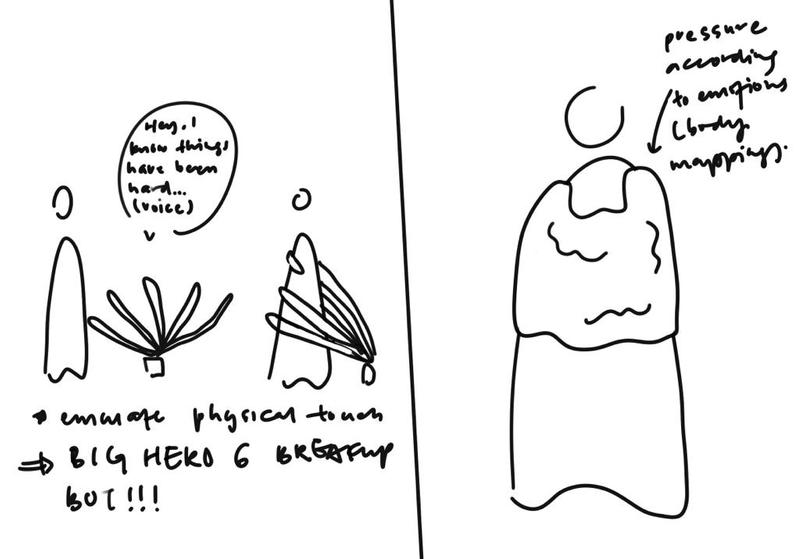


A new concept centred around the idea of a "breakup picnic" was developed, focusing on the notion of a "last date". Inspired by the existence of a "first date", the concept introduces a toolkit tailored for couples undergoing a mutual breakup. This toolkit offers a playful and interactive approach to closure through parting rituals. Choosing a meal as the ritual's framework was decided due to its familiarity. Meals provide established steps, and this recognisable structure naturally guided the progression throughout the ritual.

Research Analysis
Derived from research, valuable elements were extracted from both breakup texts and physical breakups for integration into the design:
Elements of the breakup texts:
- Ability to prepare and articulate thoughts.
- Absence of direct eye contact.
- Proof of conversation or breakup (e.g., through a screenshot).
Elements of physical breakups:
- Concept of closure, as breakup texts often lead to prolonged back-and-forth discussions.
Design Process
We integrated the identified elements into the setup of the breakup ritual.


Crafting:
We explored materiality, element placement, and branding before crafting the different elements of the toolkit through handsewn embroidery and print.



Final Product
A guide introducing the toolkit and providing instructions on utilising its elements.


Tablecloth:
Situating the ritual within a tablecloth leverages the sentimental value of handcrafted objects. The time and effort required for embroidered items reintroduces care into the breakup process often lost in digital interactions.
The hands on the tablecloth represent the seating positions of the two individuals. Facing away symbolizes the nature of text message conversations—lack of eye contact or physical connection.
The presence of a knife and spilled wine enhance the breakup's impact, portraying the messiness and pain often associated with such situations. Additionally, it serves as a reflection of the tablecloth's utilisation, mirroring the state of the relationship.
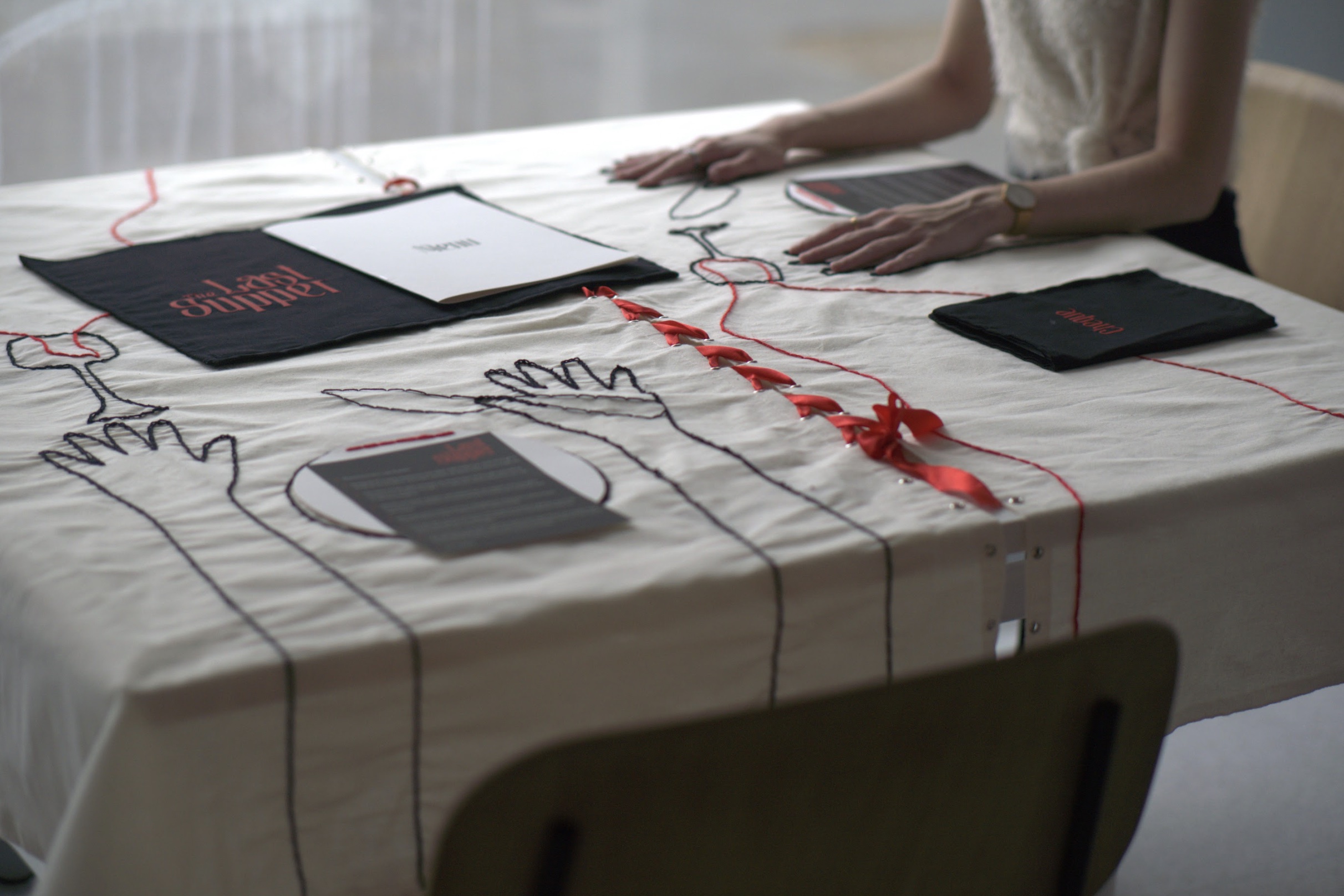
Menu:
The menu, with sections for appetizers, mains, and desserts, provides varied prompts. This allows both parties the freedom to choose questions for a structured discussion.




Notepad:
The notepad, designed as a plate, serves as a writable surface for gathering thoughts before sharing. This reflects the characteristic of text messages, allowing individuals time for clear expression.
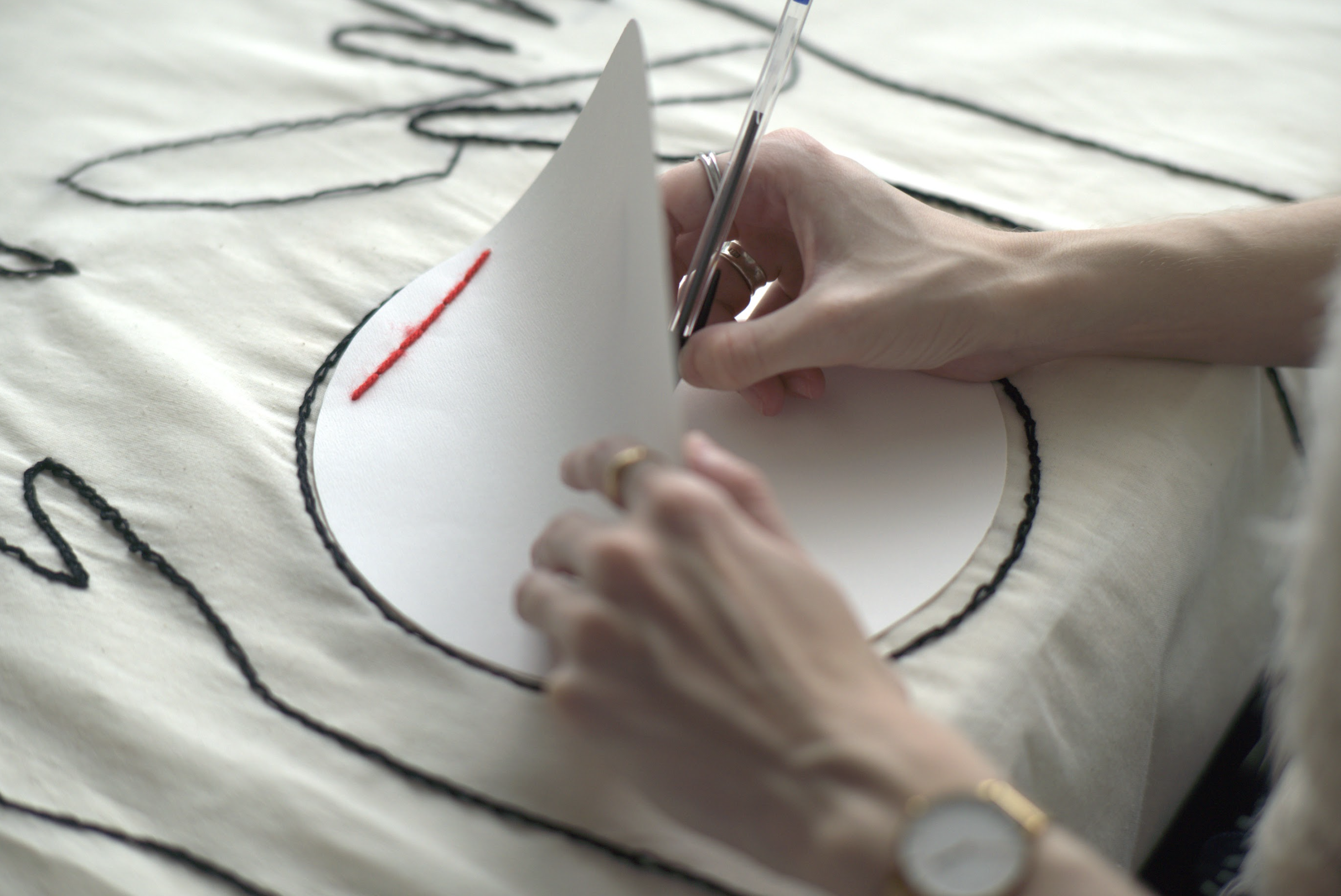
Settle the Bill:
"Settle the Bill" symbolises the aspect of closure in a relationship, which is frequently lost in the back-and-forth of texting.


Return Form:
"Return Form" strengthens the closure by providing both parties the opportunity to request the return of gifted or left-behind items.
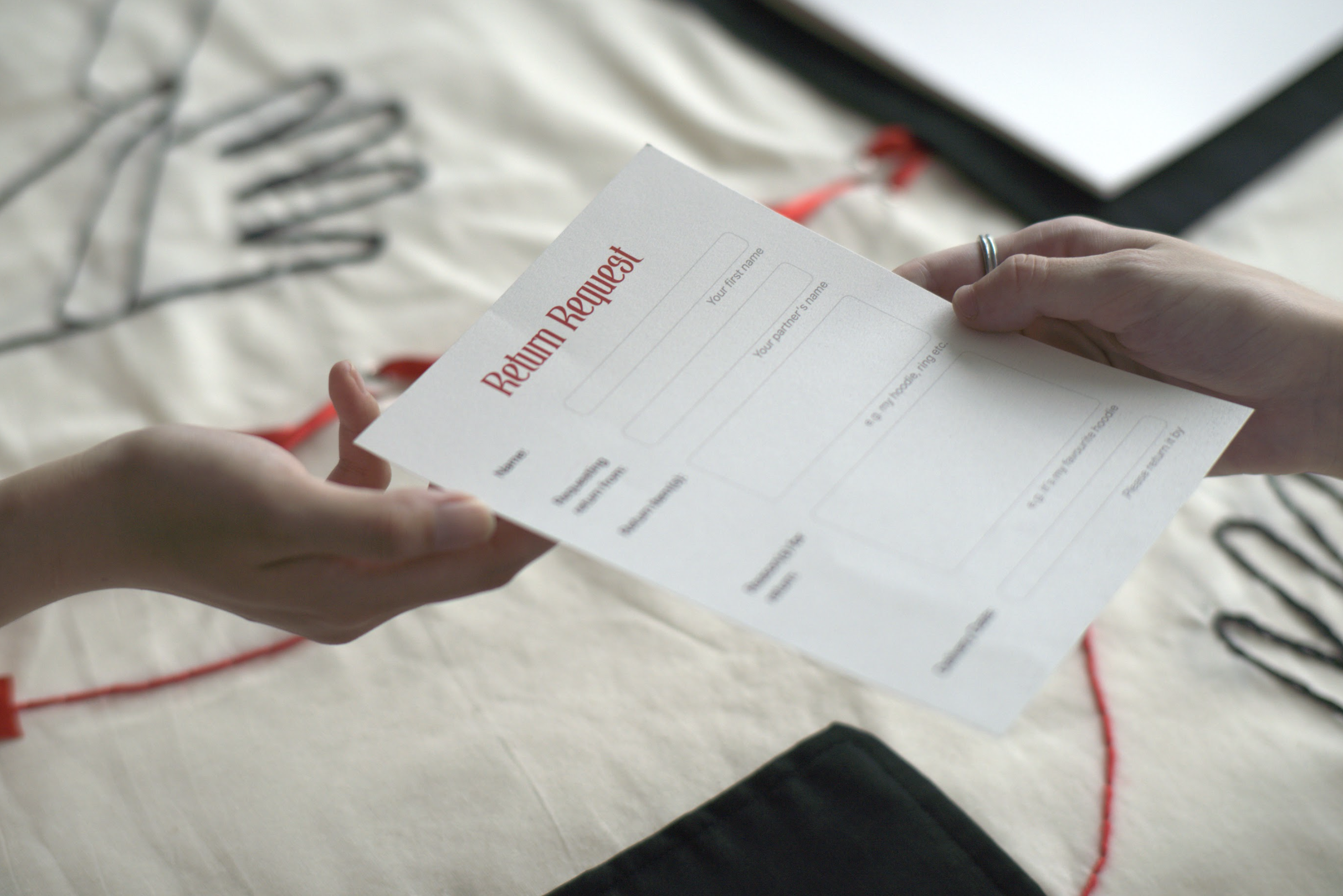

Split in the Middle:
The "Split in the Middle" represents the decision to separate and pursue individual paths. Each person keeps one side of the cloth as a memento of their shared history.

